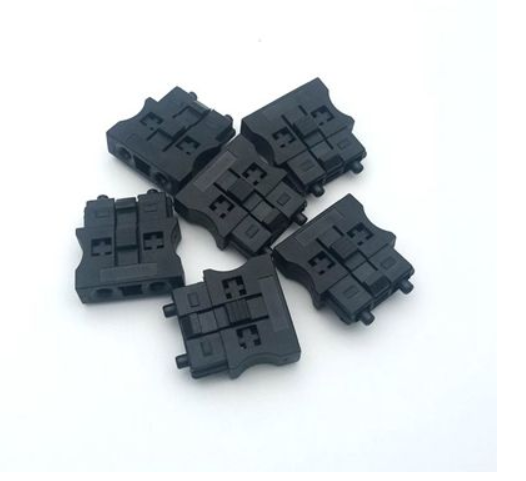



The F07 DC9300 is a high-performance Sumitomo fiber optic transceiver designed for Toshiba TODX 2402-compatible servo motor systems. Featuring a durable F07 connector, it ensures stable, high-speed data transmission with strong EMI resistance, making it ideal for CNC machines, robotics, and industrial automation. This transceiver supports real-time servo control and is a reliable replacement for Toshiba & Sumitomo servo drive applications. With plug-and-play installation, it offers seamless integration with servo amplifiers and motion controllers, providing a cost-effective alternative to OEM parts.
model:F07 Sumitomo Servo Fiber Transceiver,F07 Toshiba transceiver,DC9300,TODX 2402
Working principle:
Based on the photoelectric conversion technology, after the transmitter receives the electrical signal from the servo drive or PLC and other devices, the control circuit pre-processes it, and then drives the laser diode or light-emitting diode through the drive circuit to convert the electrical signal into an optical signal, which is transmitted through the optical fiber. The photoelectric converter at the receiving end receives the optical signal, converts it into an electrical signal, and then outputs it to the target device after amplification and processing by the receiving circuit.
F07 Plastic Optical Fiber Connector ,MRJ3BUS connector
Name: F07 Plastic Fiber Optic Connector
Model: F07 Series
Brand: Compatible with equipment from brands such as Sumitomo and Toshiba
Specifications: Compatible with 1.0mm diameter plastic optical fiber, JIS F07 standard interface, ≥500 plug-in/plug-out cycles
Compatible with: F07DC9300 transceiver, TODX 2402, and other servo system components
Features: Snap-on design for easy installation, temperature resistance from -20°C to 80°C, vibration resistance, and low insertion loss (≤0.5dB)
Application: Used for optical fiber signal connections in industrial servo motors and automated production lines, ensuring stable data transmission
Main features:
1. Adapt to different optical fiber types:
The servo optical fiber transceiver can adapt to different types of optical fibers such as single-mode optical fiber and multi-mode optical fiber. Single-mode optical fiber is suitable for long-distance transmission, and multi-mode optical fiber is generally used for short-distance transmission, so it can be used in different servo system network environments.
2. Strong anti-interference ability:
Using optical fiber as the transmission medium, it is not subject to electromagnetic interference, ensuring the accuracy and reliability of the servo system control signal.
3. Large transmission bandwidth:
It can support higher data transmission rates, meet the real-time transmission requirements of a large amount of position, speed and other data in the servo system, and ensure the precise control of the servo motor.
4. Good flexibility:
It can adapt to the bending, vibration and other conditions that may exist in the servo system, and it is not easy to affect the signal transmission due to mechanical factors. It has a certain high and low temperature resistance and can work stably in a wide temperature range.
5. Convenient network expansion and upgrade:
The fiber optic transceiver has good compatibility and can be compatible with various brands and types of Ethernet devices. It is convenient to upgrade and expand on the basis of the existing servo system network, without large-scale replacement of the original network equipment, which helps to build a more complex and larger-scale servo control system.
Typical application scenarios:
High-precision machine tools
Semiconductor equipment
Logistics automation
Power facilities
